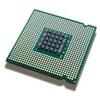Cell-free massive MIMO systems have promising data rate and uniform coverage gains. These systems, however, typically rely on optical fiber based fronthaul for the communication between the central processing unit (CPU) and the distributed access points (APs), which increases the infrastructure cost, leads to high installation time, and limits the deployment flexibility and adaptability. To address these challenges, this paper proposes two architectures for cell-free massive MIMO systems based on wireless fronthaul that is operating at a \textit{higher-band} compared to the access links: (i) A wireless-only fronthaul architecture where the CPU has a wireless fronthaul link to each AP, and (ii) a mixed-fronthaul architecture where the CPU has a wireless link to each cluster of APs that are connected together via optical fibers. These dual-band architectures ensure high-data rate fronthaul and provide high capability to synchronize the distributed APs. Further, the wireless fronthaul reduces the infrastructure cost and installation time, and enhances the flexibility, adaptability, and scalability of the network deployment. To investigate the achievable data rates with the proposed architectures, we formulate the end-to-end data rate optimization problem accounting for the various practical aspects of the fronthaul and access links. Then, we develop a low-complexity yet efficient joint beamforming and resource allocation solution for the proposed architectures based on user-centric AP grouping. With this solution, we show that the proposed architectures can achieve comparable data rates to those obtained with optical fiber-based fronthaul under realistic assumptions on the fronthaul bandwidth, hardware constraints, and deployment scenarios. This highlights a promising path for realizing the cell-free massive MIMO gains in practice while reducing the infrastructure and deployment overhead.
翻译:然而,这些系统通常依赖光纤前台结构,中央处理股(CPU)和分布式接入点(APs)之间的通信,这增加了基础设施成本,导致安装时间高,限制了部署的灵活性和适应性。为了应对这些挑战,本文件提出了基于无线前台运行的无线大型IMO系统的两个结构,该无线前台运行的无线前台系统与实际接入连接:(一) 光纤前台结构,中央处理股和分布式接入点之间有无线前台链接;(二) 混合前台结构,这一结构增加了基础设施基础设施的无线连接,每个组合通过光纤连接。这些双台结构确保了前台高数据率,提供了使分布式服务器同步的高度能力。此外,无线前台结构降低了基础设施的成本和安装时间,提高了网络部署的灵活性、适应性和可扩展性。 以可实现的中继前台前台信通技术配置的运行率,同时,我们从可实现的可实现的中继式服务器使用率,同时为当前结构构建了可实现的流程。



